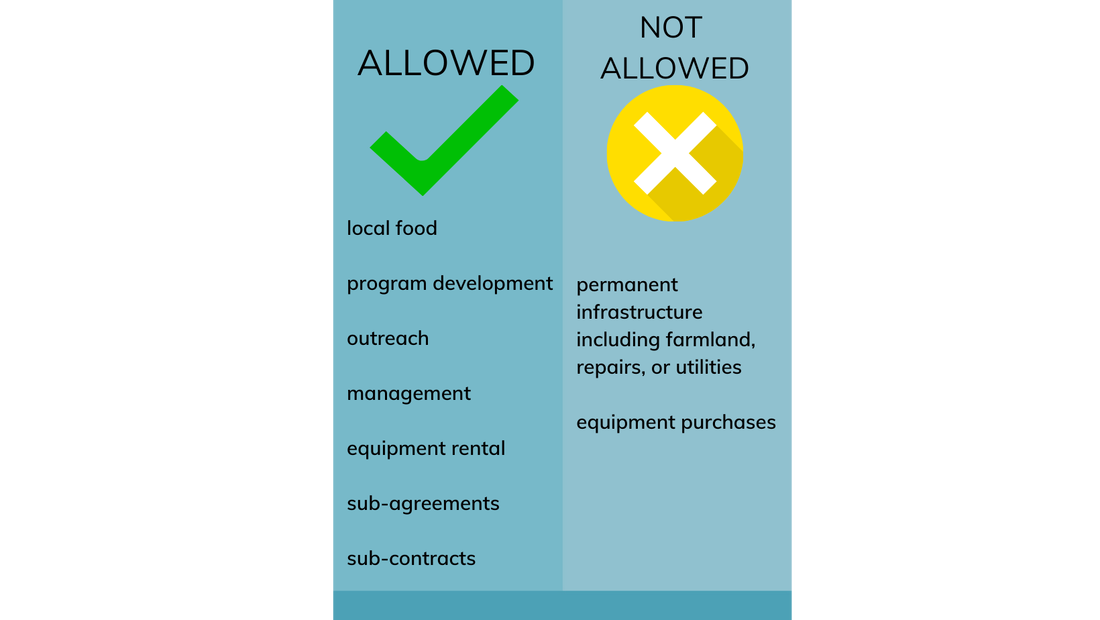Arizona Food Bank Network, Pinnacle Prevention, Arizona Farm to School Network and the Arizona Department of Education are working together to help source and place locally sourced foods in various food assistance programs. Arizona’s farmers and growers are presented with a unique opportunity to expand their market reach and support food banks, voucher programs and schools to get a reliable quantity of local fresh food for clients in need. Our goal is to purchase fresh, Arizona-grown produce, dairy, and protein and distribute it to Arizonans struggling with hunger through the statewide emergency food relief network and food assistance programs.
Want to participate in LFPA or LFS food purchasing programs? Read on and complete the Producer Intake Form linked below.
Want to participate in LFPA or LFS food purchasing programs? Read on and complete the Producer Intake Form linked below.
What is Local Food Purchasing Assistance (LFPA) Cooperative Agreement?
LFPA funding will maintain and improve food and agricultural supply chain resiliency by supporting local, regional, and socially disadvantaged farmers and ranchers through the purchase of domestic local foods for distribution in rural, remote, or underserved communities.
How much funding is on the table?
AZ is allocated to receive $8.7 million over 2 years, which will be shared between the Arizona Department of Economic Security and tribal governments.
Which costs can the funds cover?
The predominance of funds must be used to purchase local food.
Ways to Participate
Tiers 1&2: Direct Market & Regional Food Partnership Projects
Mini-grants for existing or new collaborative projects that directly distribute free food to customers from farms, farmers markets, CSAs, or regional food coalitions and partnerships. Pinnacle Prevention will issue payments directly to LFPA applicant.
Examples
·Farmer establishes new relationship with local HUD-designated senior housing site to deliver no-cost weekly fruit and vegetable bags to residents.
·Farmer sets up a no-cost monthly farm stand outside of a WIC clinic to offer a build-your-own produce bag for WIC participants.
·Nonprofit expands an existing program to a rural area of their county.
·Local food coalition creates a food delivery system in partnership with local Head Start.
·Food aggregation organization works with multiple food producers to assemble food bags.
·Farmer sets up a no-cost monthly farm stand outside of a WIC clinic to offer a build-your-own produce bag for WIC participants.
·Nonprofit expands an existing program to a rural area of their county.
·Local food coalition creates a food delivery system in partnership with local Head Start.
·Food aggregation organization works with multiple food producers to assemble food bags.
Tier 3: Emergency Food System
Friends of the Farm is a farm-to-food bank program in which AZFBN purchases Arizona-grown fruits, vegetables, dairy, eggs, and meat for distribution throughout its network of food banks and pantries across Arizona. Arizona Food Bank Network will issue payments to producers or partners.
Examples
· On-the-spot sale of local products for immediate distribution at local or regional food banks.
· Advance written purchase agreements for local food products in future growing seasons.
· Advance written purchase agreements for local food products in future growing seasons.
What is Local Food for Schools?
The USDA Agricultural Marketing Service is establishing the Local Food for Schools Cooperative Agreement Program (LFS). With funding made available through USDA’s Commodity Credit Corporation, USDA will help states deal with the challenges of supply chain disruptions brought on by the pandemic. Through the LFS program, USDA will award up to $200 million to states for food assistance purchases of domestic local foods for distribution to schools. This program will strengthen the food system for schools by helping to build a fair, competitive, and resilient local food chain, and expand local and regional markets with an emphasis on purchasing from historically underserved producers and processors.
Ready to get started?





